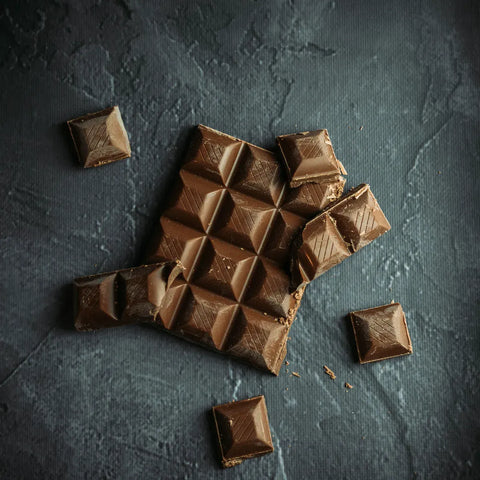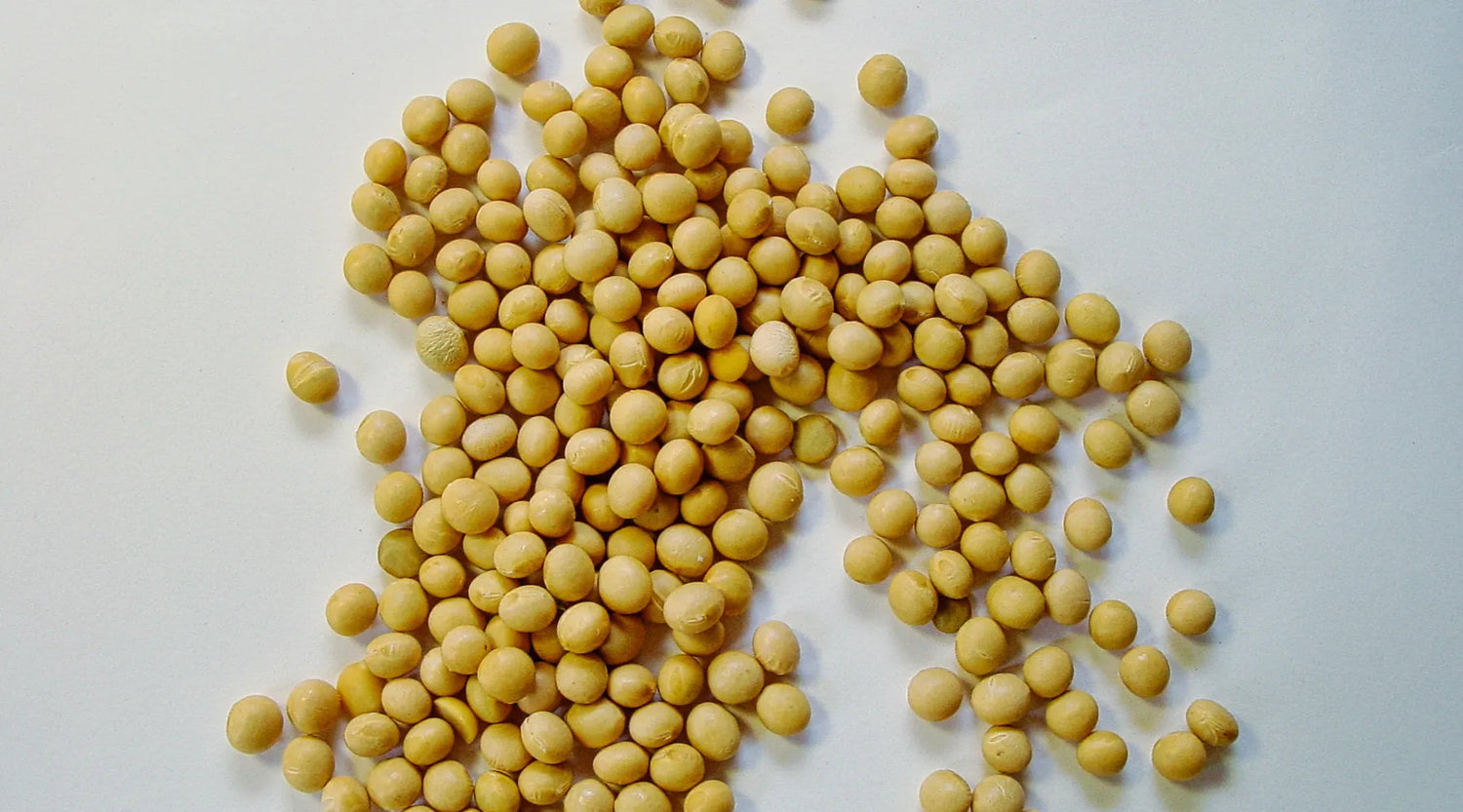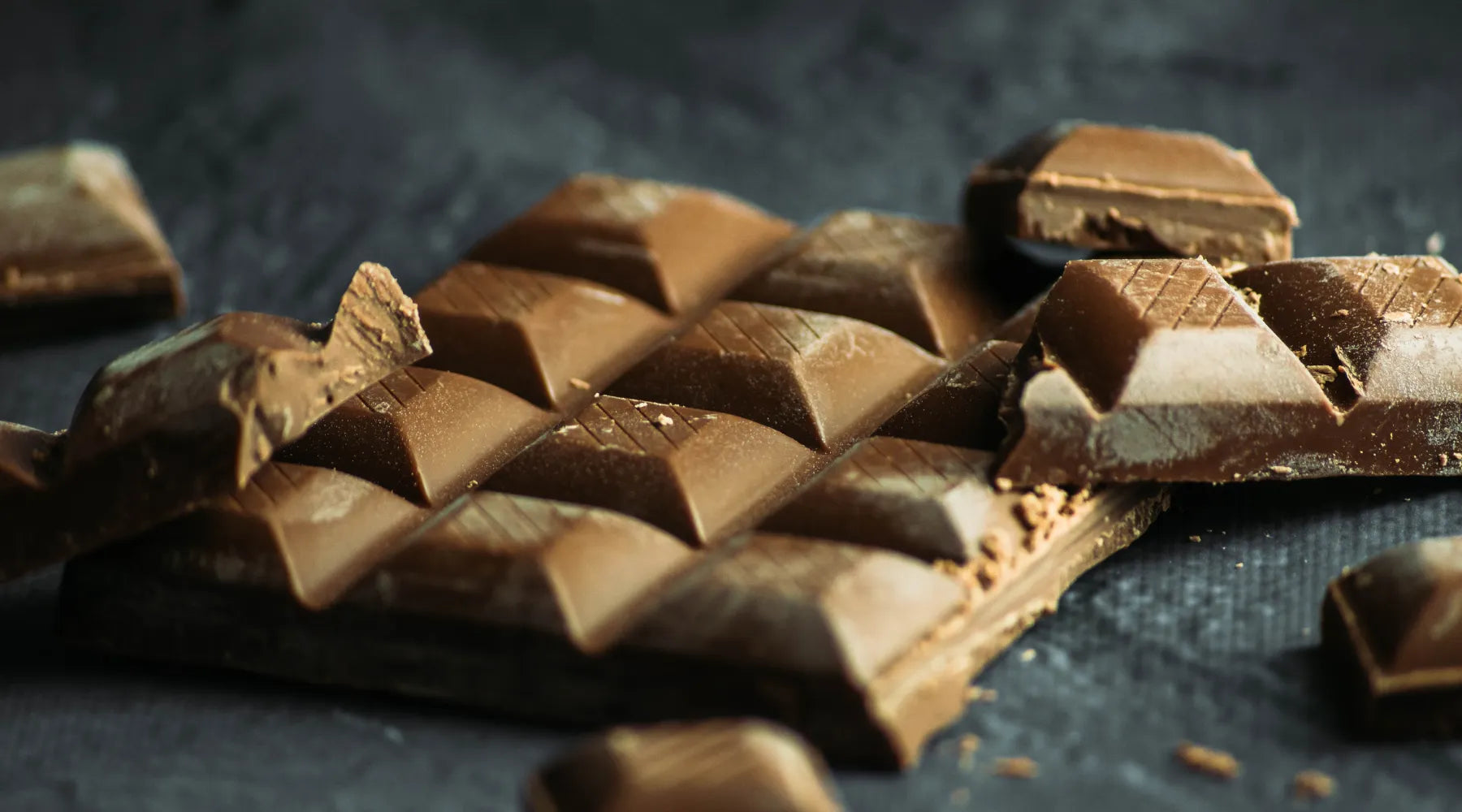There are probably few foods and ingredients that are more controversial than soy. Some are convinced of the positive properties of soybeans. Others attribute soy to negative influences on health and nature. The fact is that the green bean or parts of it are now more or less obviously contained in numerous foods. The ingredient “soy lecithin” is also often listed on the ingredients list for chocolate. What does this term mean and is chocolate with lecithin inherently unhealthier - or perhaps even the opposite? In this blog post we explain everything you should know about soy lecithin in chocolate.
To begin: What exactly is (soy) lecithin?
As many of you know from ourchocolate tastings : Ideally, dark chocolate only contains 2 ingredients, cocoa mass and sugar. However, many manufacturers actually add lecithin in the chocolate manufacturing process. So what exactly is soy lecithin?
Lecithins in general are emulsifiers. Emulsifiers make it easier to mix water and fat, which is essential in the production of many convenience foods. You can find (soy) lecithin in many packaged foods such as bread, pre-mixed salad dressings or chocolate. In addition to soy, lecithins can also be obtained from egg yolks and sunflowers.
Soy lecithin is by far the most popular in the food industry. Because soy lecithin is a waste, or more accurately, by-product, of the production of soybean oil, it is relatively inexpensive. One - or probably the decisive reason for many manufacturers for whom profit maximization is the top priority.
What is lecithin doing in chocolate?
But what exactly does soy lecithin do in chocolate, which tends not to have a high water content?
Unlike other processed foods, lecithin is added to chocolate to reduce the viscosity of the cocoa mass during the manufacturing process. The chocolate should be more liquid and therefore easier to process. In fact, more industrial manufacturers who produce chocolate in very large quantities use soy lecithin. The more liquid the chocolate is during the manufacturing process, the easier it is to pass through pipes and large machines and the easier it is to automate the process.
This effect could also be achieved by adding cocoa butter. However, there is high demand for cocoa butter in the cosmetics industry, which is why cocoa butter prices have skyrocketed in the past. The cheap alternative for many large chocolate manufacturers: soy lecithin. In order to achieve the desired effect, significantly less soy lecithin must be used than cocoa butter. Only about 0.5 percent soy lecithin in chocolate has the same effect as if the proportion of added cocoa butter is between 3 and 4 percent.
In addition to the goal of making the chocolate more liquid, the emulsifying behavior of soy lecithin also plays a role. Of course, when adding other ingredients that tend to absorb moisture from the environment, such as milk powder, water can still get into the cocoa mass. Adding soy lecithin can help solve this problem. It also simplifies two other essential chocolate production steps. Because chocolate with the vegetable emulsifier is easier to temper and shape.  Dark chocolate can also contain soy lecithin
Dark chocolate can also contain soy lecithin
Is soy lecithin unhealthy and what if I am allergic to soy?
From a health perspective, the consumption of soy lecithin is considered harmless or even positive. The emulsifier also contains, among other things, choline, a deficiency of which can promote the development of fatty liver disease. Soy lecithin can contribute to healthy fat metabolism and, according to current studies, can also reduce high blood pressure. In addition, there are speculations from various scientific camps that consumption of soy lecithin could promote brain performance.
But what if you are allergic to soy? There are two camps when it comes to the question of whether people with soy allergies should also avoid soy lecithin. One classifies foods such as chocolate, which contain lecithin from soy, as safe for allergy sufferers. Because the soy allergens are mainly present in the proteins that are lost during the production of lecithin, no allergic reaction is to be expected. This assessment was made by, among others, the Food Allergy and Resource Program at the University of Nebraska-Lincoln. The other camp recommends staying on the safe side and also avoiding foods with soy lecithins if you have a soy allergy.
So what speaks against soy lecithins in chocolate?
Let's briefly summarize our findings: Soy lecithins are a cheap alternative to cocoa butter and help in the chocolate manufacturing process. In addition, they are virtually healthy and can most likely be enjoyed by allergy sufferers without any problems. But, as is so often the case, not everything that glitters is made of gold.
Disadvantages of consuming soy from conventional agriculture
Let's start with the problem of soybean cultivation. Most soy lecithin comes from conventional soy farming. And just three countries - the USA, Brazil and Argentina - produce 70 percent of the world's soy. These countries largely rely on genetically modified varieties, most of which have developed strong resistance to glyphosate. Glyphosate is probably the most controversial weed killer, which is sprayed on many soybean cultivation areas because it is unfortunately also very effective. This means that glyphosate residues remain in the soy and are thus ingested by consumers. The effects of glyphosate on the human body have not yet been sufficiently scientifically studied, but there are suspicions that it could be carcinogenic.
In addition, tens of thousands of hectares of rainforest are disappearing every year for the cultivation of conventional soy. So another point that speaks against it.
All of this, or much of it, could be avoided if only lecithin from organic soy were used in food production. However, this is significantly more expensive than conventional soy and cost minimization ultimately remains - unfortunately - the be-all and end-all for many large manufacturers.
Chocolate tastes better without soy lecithin
Even though soy lecithin is tasteless, it has a reputation for not necessarily improving the quality of chocolate. The texture of chocolate containing soy lecithin is often slightly waxy and sometimes not as creamy as chocolate with added cocoa butter.
Another point that speaks against soy lecithin in chocolate: It tends to flatten the natural flavors of the chocolate. Here too, cocoa butter wins, the addition of which highlights the specific aromas and nuances of the respective chocolate.
Our conclusion: Lecithin in chocolate doesn't actually have to be there
As the last two points made clear, we're not necessarily sold on soy lecithin in chocolate. Especially because the addition of soy lecithin often indicates that the manufacturer may not necessarily focus on quality when selecting ingredients, which just has its price.
It is also important to note that some smaller, sustainably produced manufacturers also add lecithin to their chocolate. The reason for this is that smaller chocolate manufacturers in particular only have a few machines and cannot afford for them to wear out and break more quickly due to chocolate that is too viscous. In this case, the sustainable alternative sunflower lecithin is used, which can be enjoyed without any risk for people with soy allergies and, according to the manufacturer, is also better for the environment and soil.
FAQ on the topic “Chocolate and lecithin”
How much lecithin is in chocolate?
The proportion of lecithin in chocolate is usually very low, around 0.5 percent of the total mass, because even small amounts produce the desired effect.
Why is there soy lecithin in chocolate?
(Soy) lecithin makes the chocolate production process easier because it makes the cocoa mass less viscous. Cocoa butter has a similar effect, but is significantly more expensive.
What replaces lecithin in chocolate?
Lecithin can be replaced with cocoa butter, but this is significantly more expensive. If you read cocoa butter on the list of ingredients for your chocolate, this is often the first indication that it tends to be of higher quality.
Which foods have a lot of lecithin?
Foods with a natural and particularly high lecithin content are soy products in general, walnuts, buttermilk, eggs, peas and corn.
Header photo by Thomas Kinto on Unsplash



